Examples Part B - Hipparcos
| Example Curves from Part B |
All magnitudes in the text and plots refer to the Hipparcos Hp magnitude scale.
Different plot symbols are described in Volume 1.
Further details of each object are contained in the Variability Annexes.
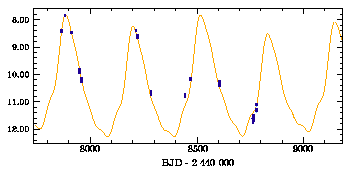 |
HIP 344 (SV And). This star is a Mira Ceti type variable, and varies between about 8.2 and 12.2 magnitudes with a period of 315.8 days. |
|
HIP 10826 HIP 10826 (Omicron Ceti). This star is a Mira Ceti type variable, and varies between about 2.9 and 7.3 magnitudes with a period of 333.8 days. |
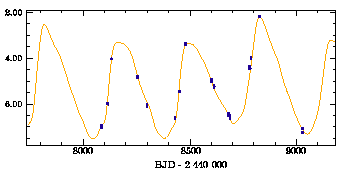 |
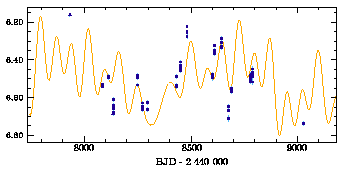 |
HIP 13064 (Z Eri). This star is a semi-regular pulsating variable, and varies between about 6.25 and 6.71 magnitudes. There is no reference period for this object. |
|
HIP 22127 (X Cam). This star is a Mira Ceti type variable, and varies between about 8.1 and 11.8 magnitudes with a period of 142.7 days. |
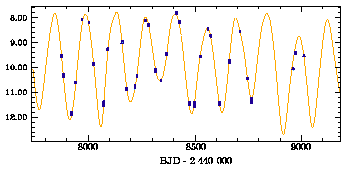 |
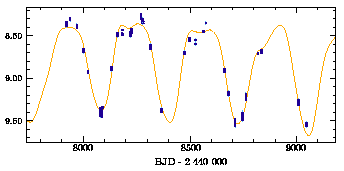 |
HIP 26753 (S Cam). This star is a semi-regular pulsating variable, and varies between about 8.4 and 9.5 magnitudes with a period of 326.5 days. |
|
HIP 36521 (U Mon). This star is an RV Tauri type pulsating variable, and varies between about 5.8 and 7.8 magnitudes. A period of 91.32 days is given in the literature. |
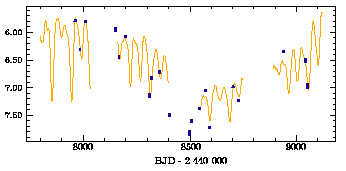 |
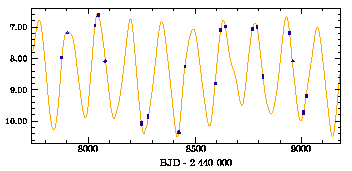 |
HIP 61667 (R Vir). This star is a Mira Ceti type variable, and varies between about 6.8 and 10.1 magnitudes with a period of 145.62 days. |
|
HIP 62071 (UW Cen). This star is an R Coronae Borealis type eruptive variable, and varies between about 9.6 and fainter than 12.6 magnitudes. There are no pre-Hipparcos estimates for a period and Hipparcos could not find one either. |
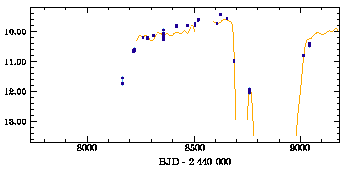 |
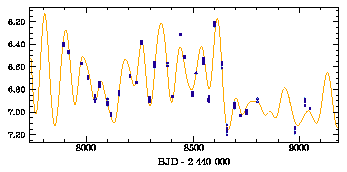 |
HIP 95902 (AF Cyg). This star is an irregular type eruptive variable, and varies between about 6.3 and 7.2 magnitudes. There is a periodicity of 92.5 days given in the literature. |
|
HIP 98411 (V482 Cyg). This star is an R Coronae Borealis type eruptive variable, and varies between about 10.9 and 12.8 magnitudes. There are no pre-Hipparcos estimates for a period and Hipparcos could not find a variabilty period either. |
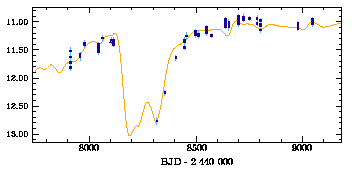 |
